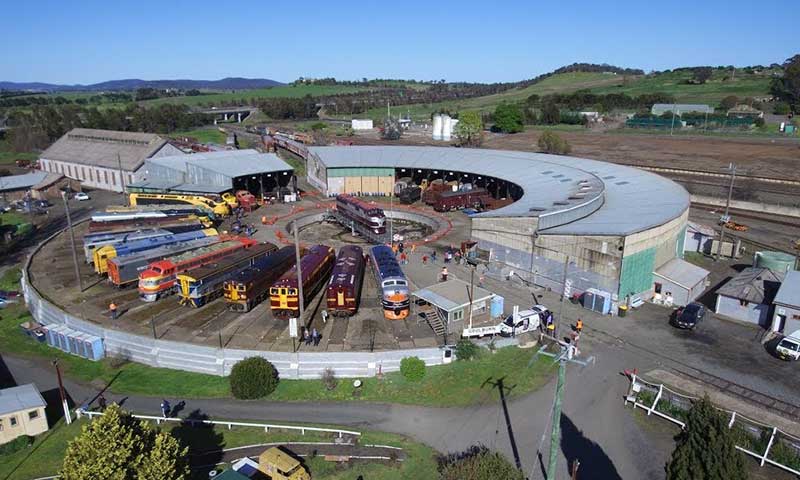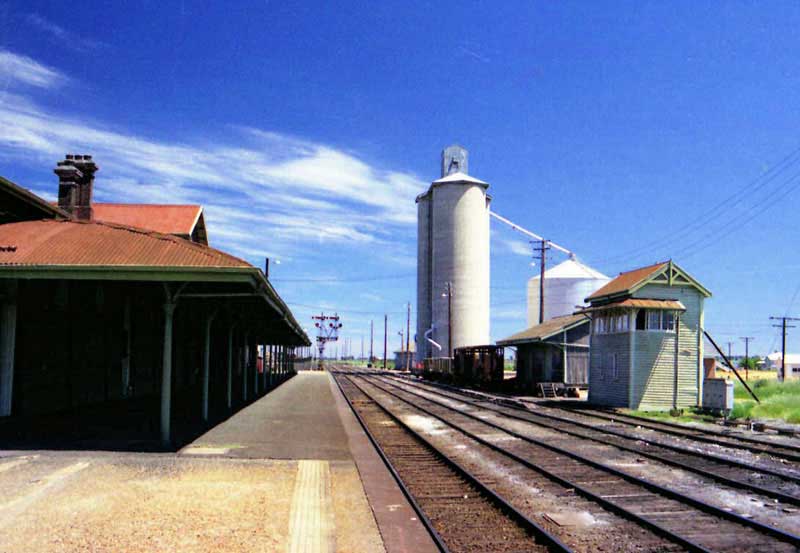The Roundhouse

Goulburn roundhouse, NSW
A roundhouse is a building erected in a semi circle that is used to house engine maintenance facilities. A turntable is usually surrounded, in part or in whole, by a roundhouse. It is more common for the roundhouse to only cover a portion of the land around a turntable but fully circular roundhouses exist, though they are rare.

Roundhouses were originally constructed to service steam locomotives. Regular daily serving began with a hostler moving an engine to an ash pit to remove the detritus of burned wood or coal. The locomotive's tender would be refilled with fuel, water, and sand, and the engine would be placed above an inspection pit so that workers could inspect it for any maintenance needs, like wear on its brake shoes and wheels. The engine's many moving parts would also be thoroughly lubricated, although this meant that engines typically required frequent cleanings to remove old lubricating fluid along with dirt and anything else that stuck.
Having a roundhouse meant that steam locomotives could be turned around and made ready for service within a few hours of arrival. However, locomotives with major issues or in need of semi-regular maintenance required additional time. Larger roundhouses were adequately staffed with boilermakers, blacksmiths, and pipefitters so that this work could be accomplished on-site; only the most extensive work, such as major unexpected repairs or scheduled major maintenance, required the transport of locomotives to specialised backshops, though today, those functions are often performed at the roundhouse.
The Turntable
Essential for a roundhouse to function is a turntable, which sits in the centre of the circle around which the roundhouse has been built.
In rail terminology, a railway turntable is a device for turning railway rolling stock, usually locomotives, so that they can be moved back in the direction from which they came This is especially true in areas where economic considerations or a lack of sufficient space have served to weigh against the construction of a turnaround wye. In the case of steam locomotives, railways needed a way to turn the locomotives around for return trips as their controls were often not configured for extended periods of running in reverse and in many locomotives the top speed was lower in reverse motion.












